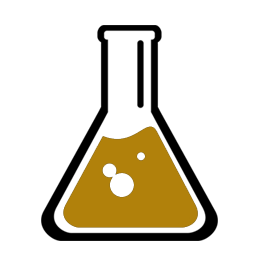Chemical Hygiene Plan
Purdue Chemical Hygiene Plan Program
“Laboratory use of hazardous chemicals” is defined as handling or use of such chemicals in which all of the following conditions are met:
- Chemical manipulations are carried out on a laboratory scale;
- Multiple chemical procedures or chemicals are used;
- The procedures involved are not part of a production process, nor in any way simulate a production process; and
- Protective laboratory practices and equipment are made available and in common use to minimize the potential for employee exposure to hazardous chemicals.
Since 1990, the Occupational Safety and Health Administration (OSHA) has required "employers engaged in the laboratory use of hazardous chemicals" to have a Chemical Hygiene Plan (CHP). The Purdue University CHP was prepared in accordance with the requirements of the OSHA Occupational Exposure to Hazardous Chemicals in Laboratories Standard (Lab Standard) found in 29 CFR 1910.1450. Purdue University CHP applies to all laboratories that use, store, or handle hazardous chemicals and all personnel who work in these facilities.
Information presented in the Purdue University CHP is based on best practices from sources such as the “Global Harmonized System of Classification and Labeling of Chemicals”; “Prudent Practices for Handling Hazardous Chemicals in Laboratories”, published by the National Research Council, the American Chemistry Society Task Force on Laboratory Chemical and Waste Management’s “Laboratory Waste Management, A Guidebook”; the Princeton University “Laboratory Safety Manual”; and the University of California – Los Angeles “Chemical Hygiene Plan”. The information provides a broad overview what is necessary for the safe operation of laboratories that utilize hazardous chemicals.
Each chemical hygiene plan must be lab-specific and address all chemical safety issues in the work area(s) it is developed for. Customize this document by adding appropriate sections, in the form of standard operating procedures (SOPs), hazard assessments, and any other written (or referenced) lab-specific operating procedures or protocols that address the hazards and how to mitigate risks. Guidance for customization is included in the Purdue University CHP. It is essential that this be done by someone who is completely familiar with the work and work area covered, and who understands the CHP requirements.
|
|
|
Other Chemical Hygiene and Laboratory Safety Links:
- Hydrofluoric Acid (HF) and Hydrogen Fluoride (HF)
- Purdue University Department of Chemistry
- Recommended Reading
- Evaluations of Carcinogenic Risks to Humans: As evaluated in IARC Monographs
- Less is Better: Guide to Minimizing Waste in Laboratories, 2002 version of the popular ACS publication
- Prudent Practices in the Laboratory: Handling and Management of Chemical Hazards, Updated Version (2011)
- Safe Science Tutorial: free, informative, from HHMI
- Report These Materials (PDF or Microsoft Word): - list of 29 materials, mostly chemical substances, which are regulated by OSHA as very special occupational hazards and for which personnel monitoring and medical evaluation plans may be required. Replaces the old "Special Health Hazards Identification Form.
- Teratogens: from Sax 7th ed. "Dangerous Properties of Industrial Materials"
Campus Safety Contacts

If you see something, say something.
Purdue Police
Phone: (765) 494-8221
Purdue Fire
Phone: (765) 494-6919
Sign up for Emergency Text Messages
Do you want to recognize one of our staff for a job well done? Nominate the staff member(s) for a Bravo Award here!


